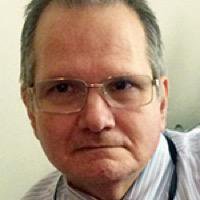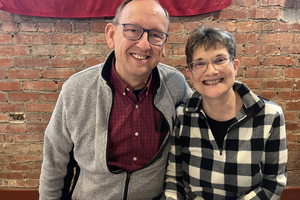The Hidden Lessons of the Finding in the Temple
ROSARY & ART: In the Fifth Joyful Mystery, Jesus’ three days in the Temple foreshadow his Resurrection

(Luke 2:41-52)
The fifth joyful mystery was probably very joyful for Mary and Joseph. Wouldn’t you rejoice if your lost child was found after three days of not knowing where he was?
The Gospel recounts that “each year, his parents went to Jerusalem for the feast of Passover, and when he was 12 years old, they went up according to festival custom.” In Jesus’ day, while the Temple still existed, devout Jews made a pilgrimage to Jerusalem to be in the Holy City for Passover, the most important feast of the Jewish year. Passover marked the liberation of the Jewish people from Egyptian slavery after God worked signs and wonders on their behalf, culminating in the death of Egypt’s firstborn. There were additional feasts that were kept on pilgrimage and, as we noted, the trip from Nazareth to Jerusalem by the means of transportation available in Jesus’ time did not make the trip easy or quick.
Unlike Caesar’s census, where individual families had to disperse around Israel to their ancestral homes, the annual Passover pilgrimage had one point of convergence for observant Jews. Therefore, it’s likely that a caravan set out from Nazareth and that Jesus, Mary and Joseph were in it. The Gospel says as much when it notes that, for the return trip, Jesus was not apparently with his parents when the caravan departed, but that didn’t immediately generate alarm. His parents assumed he might be with some favorite relatives and simply searched the troupe before discovering Jesus was missing.
The Holy Family had come to Jerusalem for Passover, in commemoration of God’s saving action for Israel. When Jews spoke (and speak) of Passover, they understood it as the Bible does (Exodus 12:14): a memorial (zikkaron). In Hebrew thought, a zikkaron is not a past-and-finished event. It is an event in which those alive and present now are part of that event. The best illustration: When the youngest child in a Jewish home asks the ritual Passover question, “Why is this night different from all others?” The child does not ask, “Why was that night different?” Jewish theology affirms that all Israel is present in that first Passover through all time.
So, when Passover was “completed,” the return trip set out, and Jesus was found to be missing, his parents retraced their steps to Jerusalem. They spent “three days” scouring the Holy City for their boy. Imagine their hearts and minds!
“After three days, they found him in the Temple” in discourse with the teachers of the Law, “listening to them and asking them questions,” while his answers “astounded” his interlocutors.
One can imagine the relief of Mary and Joseph. Imagine their coming into the Temple and finding their Son, hearing his voice from perhaps around a corner and then seeing him amid the Temple establishment. I’m sure Joseph must have had a swell of pride in his boy.
But when his Mother asks why he was there and caused them worries, Jesus’ answer at first seems harsh: “Did you not know I must be in my Father’s house?” Where else did you think I would be?
“But they did not understand what he said to them.”
The dynamics of the Holy Family were, of course, unique. Any family with a child who was also God would be. Any family where at least two members were sinless would be. That said, there are also ordinary human concerns at work here.
Some observations. First, Jesus was “12 years old.” That was at or near the traditional age for bar mitzvah. The bar mitzvah rite meant one was a “son of the Commandments,” i.e., a full-fledged adult Jew. It meant one did not have the excuse of being a child: the full weight of the Law obliged a “son of the Commandments.” Because in Jewish practice a synagogue service required 10 adult male Jews (a minyan) one counted toward that quorum after bar mitzvah. As a Jewish boy, Jesus would have undoubtedly attended some version of “Hebrew school” to learn about the Bible and God’s relationship to Israel. So it is no surprise that he would be in the Temple among the doctors of the Law, “listening and asking them questions,” and engaging in discussion with them.
Second, Jesus is missing in Jerusalem for “three days.” Jesus will one day be missing from Jerusalem for “three days,” from Good Friday until Easter Sunday. Many will look for him and feel his absence. That is the spirituality of Holy Saturday.
Third, Jesus is about his Father’s business. That is the story of his Life. In the future, he will pose similar answers incomprehensible to some, e.g., when he asks “Who is my mother? Who are my brothers?” (Matthew 12:48-50) or when he tells a prospective disciple who wants first to say goodbye at home that one who takes the plow but looks back is unworthy (Luke 9:62). The message is simple: the will of God trumps everything else. We’ve already seen that in Mary’s Life — and how “God makes all things work for the good of those who love him” (Romans 8:28). That doesn’t make the radicalness of the commitment any less demanding. Jesus is a “sign of contradiction” and contradiction can hurt.
The fifth mystery is depicted in art by the 19th-century British pre-Raphaelite painter, William Holman Hunt. Most people know him for his famous painting, “The Light of the World,” where Jesus stands at the closed door of one’s heart, knocking.
“The Finding of the Saviour in the Temple,” dating from about 1855, is held by the Birmingham (U.K.) Museum and Art Gallery. Unlike other artists who anachronistically situate Biblical events in Christian backgrounds (e.g., under baldacchinos or in churches), many 19th-century artists sought to be artistically authentic, “background-faithful” to what Judea and Galilee in the first-century might have looked like. Many, in fact, made trips to the Holy Land.
The Holy Family is situated on the right. Mary speaks to the young Jesus, their hands joined. Joseph, protectively, hovers over both. It’s a kind of “time-out” moment: “Son, let me interrupt to ask: ‘Where have you been?’”
The Holy Family is oriented toward us and Jesus (as he should) draws us into the picture and discussion. On the left, in a semi-circle looking at Jesus are at least eight elder teachers of the Law, all looking at Jesus. The elder one on the left holds the scrolls of Scripture. Some appear to consult among themselves. Behind them, mostly in green, are their junior students and also young boy-assistants.
It’s a corner of the Temple courtyard, where other things are also occurring. In the background, behind the doctors, we see some other people, perhaps praying or exchanging money for Temple currency to buy religious items. A poor man sits on the steps just outside the debate area, begging. As usual, life goes on, even around Jesus.
Scripture tells us Jesus left with them for Nazareth “and was obedient to them.” It also notes “his mother kept all these things in her heart.” Already from his conception, there were things about this child she may not have understood. But she understood God had called her to this place in his plans, and she was “the handmaid of the Lord.”
And Jesus grew up. But for these episodes from his infancy and youth which we contemplate among the joyful mysteries, most of Jesus’ Life is called the “Hidden Life.” Thirty of his 33 years were spent in the Nazareth home, praying but working. In that, Jesus affords us an example for the domestic Church and its importance in the formation of its members.
Are we, like Jesus, concerned about our Father’s house, whether that be our local church or the church formed in the womb of the family?
















